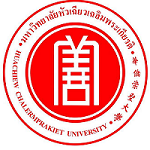Please use this identifier to cite or link to this item:
https://has.hcu.ac.th/jspui/handle/123456789/4129| Title: | 对外汉语初级汉字课教学设计——以云南经济管理学院留学生为例 |
| Other Titles: | การออกแบบการเรียนการสอนวิชาอักษรจีนเบื้องต้นสำหรับหลักสูตรภาษาจีนนานาชาติ : กรณีศึกษานักเรียนต่างชาติวิทยาลัยบริหารธุรกิจยูนนาน Teaching Design of Chinese Characters in Chinese International Education : A Case Study of Yunnan University of Business Management. |
| Authors: | 徐伟杰 Xu Weijie 向风云 Xiang Fengyun Huachiew Chalermprakiet University. College of Chinese Studies |
| Keywords: | ภาษาจีน -- การศึกษาและการสอน Chinese language -- Study and teaching ตัวอักษรจีน Chinese characters นักศึกษาต่างชาติ Students, Foreign ภาษาจีน -- การศึกษาและการสอน (อุดมศึกษา) Chinese language -- Education and Teaching (Higher Education) 汉语 -- 学习和教学 (大学) 国际学生 汉字 汉语 -- 学习和教学 |
| Issue Date: | 2024 |
| Publisher: | Huachiew Chalermprakiet University. |
| Abstract: | In the context of globalization, Chinese as a Foreign Language (CFL) education is facing new challenges and opportunities. This study aims to enhance the efficiency and interest of non-native learners in learning Chinese characters through innovative teaching strategies. It focuses on personalized learning paths and the integration of cultural contexts, exploring how to effectively improve the teaching outcomes of Chinese characters. By deeply analyzing the learning motivations and challenges of international students at Yunnan University of Finance and Economics, this study employs teaching strategies such as schemata, multimodality, and cognitive development theories to enhance the attractiveness and practicality of the teaching content. In practice, combining stories, multimedia, and interactive activities, such as calligraphy workshops, stimulates students' interest in learning Chinese characters and enhances teaching effectiveness. This research provides new perspectives and methods for CFL teaching, hoping that in the context of globalization, CFL education can serve international students more effectively, promoting cultural exchange and understanding. Chapter One analyzes the characteristics and learning challenges of teaching Chinese characters in CFL, clarifying the learning characteristics of the target students and the uniqueness of the Chinese character teaching curriculum. By pointing out the main features of modern Chinese character learning, this paper proposes basic strategies and methods for teaching Chinese characters, aiming to provide a clear direction and methodological foundation for Chinese character teaching. Chapter Two conducts a detailed analysis of the challenges faced by international students of Yunnan University of Finance and Economics in learning Chinese characters and identifies the main challenges and needs encountered by learners in the process of learning Chinese characters through a sample survey scheme. This step is crucial for understanding the actual needs of learners and providing targeted data support for subsequent teaching design. Chapter Three proposes a set of teaching models based on situational teaching and project practice, according to the survey and analysis results of the previous chapters. By emphasizing the selection of teaching methods, the use of teaching resources, and the innovation of teaching models, this study aims to improve teaching effectiveness and enhance learners' participation and interest. Chapter Four elaborately describes the specific steps of teaching practice, covering the construction of teaching cases, setting experimental objectives, selecting experimental participants, and evaluating teaching effectiveness. Through a series of practical activities, this study verifies the effectiveness of the proposed teaching design. Based on feedback and evaluation from teaching practice, this paper deeply analyzes the advantages and disadvantages of the teaching design and proposes specific improvement measures. 在全球化背景下,对外汉语教育正面临着新的挑战和机遇。本研究旨在通过创新教学策略,提高非母语学习者学习汉字的效率和兴趣。研究聚焦于个性化学习路径、文化情境融入,探索如何有效提升汉字教学成效。通过深入分析云南经济管理学院留学生的学习动机和挑战,本研究采用了图式、多模态和认知发展理论等教学策略,提高教学内容的吸引力和实用性。实践中,结合故事、多媒体和互动活动,如书法工作坊,激发学生学习汉字的兴趣,并提升教学效果。本研究对外汉语教学提供了新的视角和方法,期待在全球化大背景下,对外汉语教育能更有效服务国际学生,促进文化交流和理解。第一章通过分析对外汉语教学中汉字教学的特点与学习挑战,明确了教学对象的学习特性以及汉字教学课程的独特之处。通过指出现代汉字学习的主要特点,本文提出了汉字教学的基本策略和方法选择,旨在为汉字教学提供明确的方向和方法论基础。第二章通过对云南经济管理学院留学生的汉字学习挑战进行细致分析,并通过样本调查方案,准确识别学习者在汉字学习过程中遇到的主要挑战和需求。这一步骤对于理解学习者的实际需求,以及为后续教学设计提供了针对性的数据支持。第三章根据前面章节的调查和分析结果,本研究提出了一套基于情景式教学和项目实践的教学模式。通过强调教学方法的选择、教学资源的运用以及教学模式的创新,本研究旨在提高教学效果,增强学习者的参与度和兴趣。第四章深入讲述了教学实践的具体步骤,涵盖了教学案例的构建、实验目标的设定、实验参与者的选取,以及对教学成效的评价。通过这一系列实践活动,本研究验证了所提出教学设计的有效性。基于教学实践的反馈与评估,本文深入分析了教学设计的优势与不足,并据此提出了具体的改进措施。 |
| Description: | Thesis (M.A.) (Teaching Chinese) -- Huachiew Chalermprakiet University, 2024. |
| URI: | https://has.hcu.ac.th/jspui/handle/123456789/4129 |
| Appears in Collections: | College Of Chinese Studies - Theses |
Files in This Item:
| File | Description | Size | Format | |
|---|---|---|---|---|
| Mr. XIANG FENGYUN.pdf Restricted Access | 2.16 MB | Adobe PDF | View/Open Request a copy |
Items in DSpace are protected by copyright, with all rights reserved, unless otherwise indicated.
